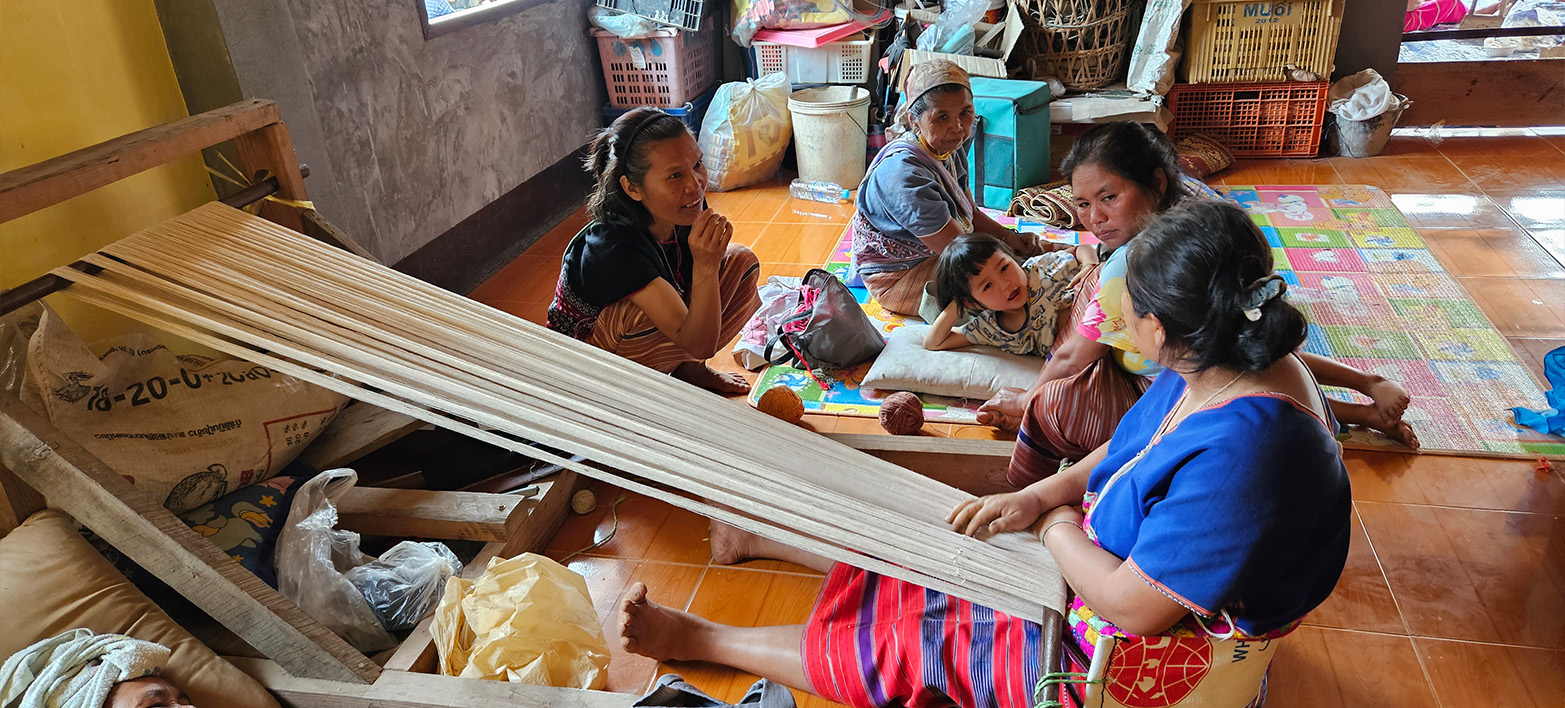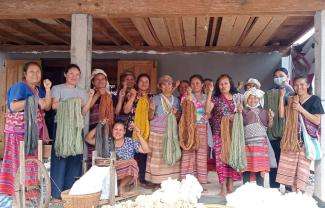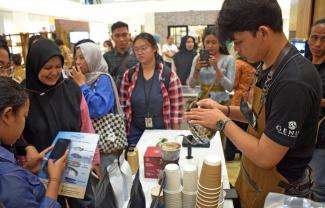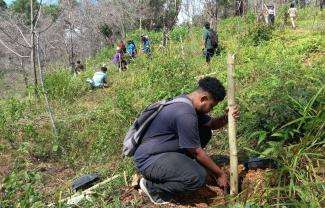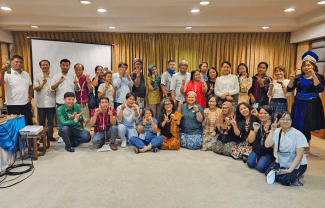Weaving and natural dyeing is a traditional livelihood among the Pgak'yau or Karen, an indigenous people in Huai EKhang, a forested upland village in Chiang Mai province, Thailand. In addition, they produce rice and depend on forest products.
However, weaving and dyeing as a tradition has waned in many indigenous communities due to easy access to industrial textiles and clothes with affordable prices.
This led to a group of women in Huai EKhang village to organize a training on the craft, not only to rekindle a dying tradition but also to promote a self-sufficient local economy and a sustainable way of living. Besides, the group wants to pass on the practice to the young people.
The training covered the whole process of dyeing and weaving:

It begins by putting raw cotton under the sun and then grinding it using a traditional machine. The women pay special attention to separate the cotton from its seeds. This is followed by softening and refining the cotton to produce yarn. The yarn is then dyed using traditional methods.

The Karen people use leaves, tree parts, and other natural materials. Turmeric produces a yellow color. They can produce both light and heavy colors.
After dyeing, the next step is weaving and designing. By improving their designs, the group expects to produce more attractive and marketable products.
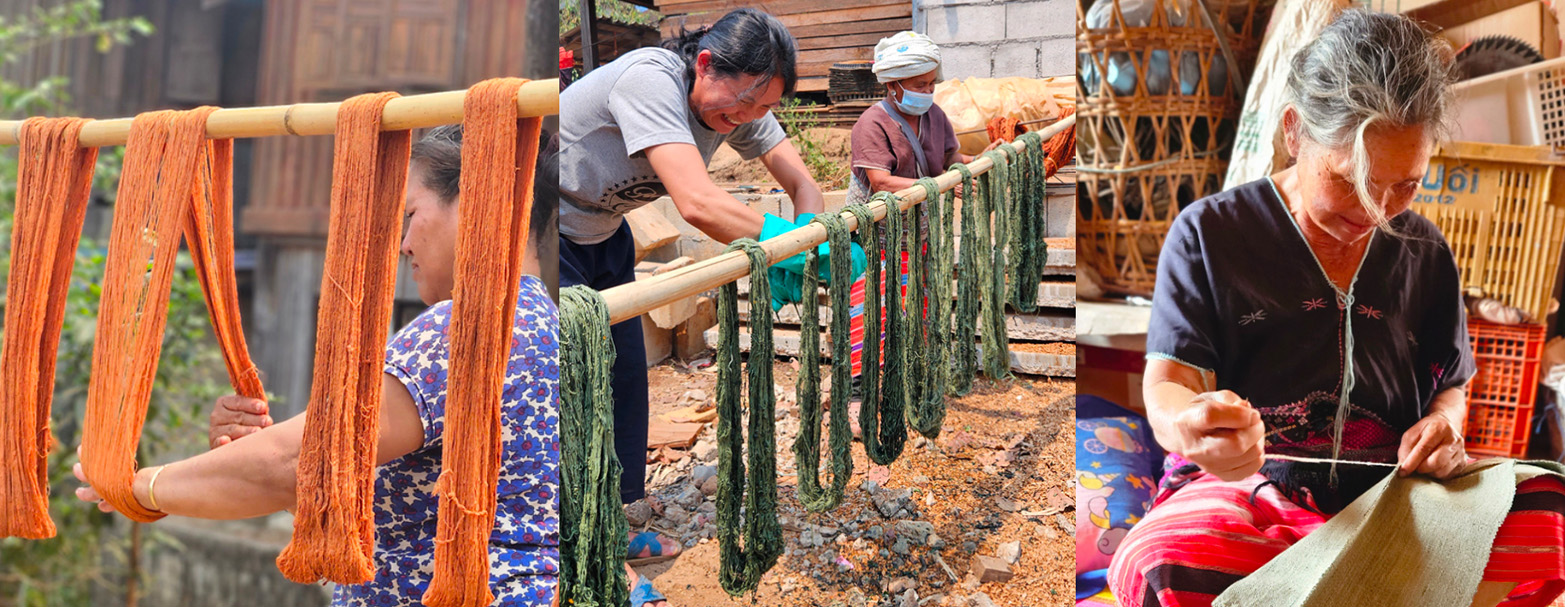
The women were also trained how to promote their products in social media. Being social media-savvy, the women quickly learned the techniques how to effectively advertise using their socmed accounts.
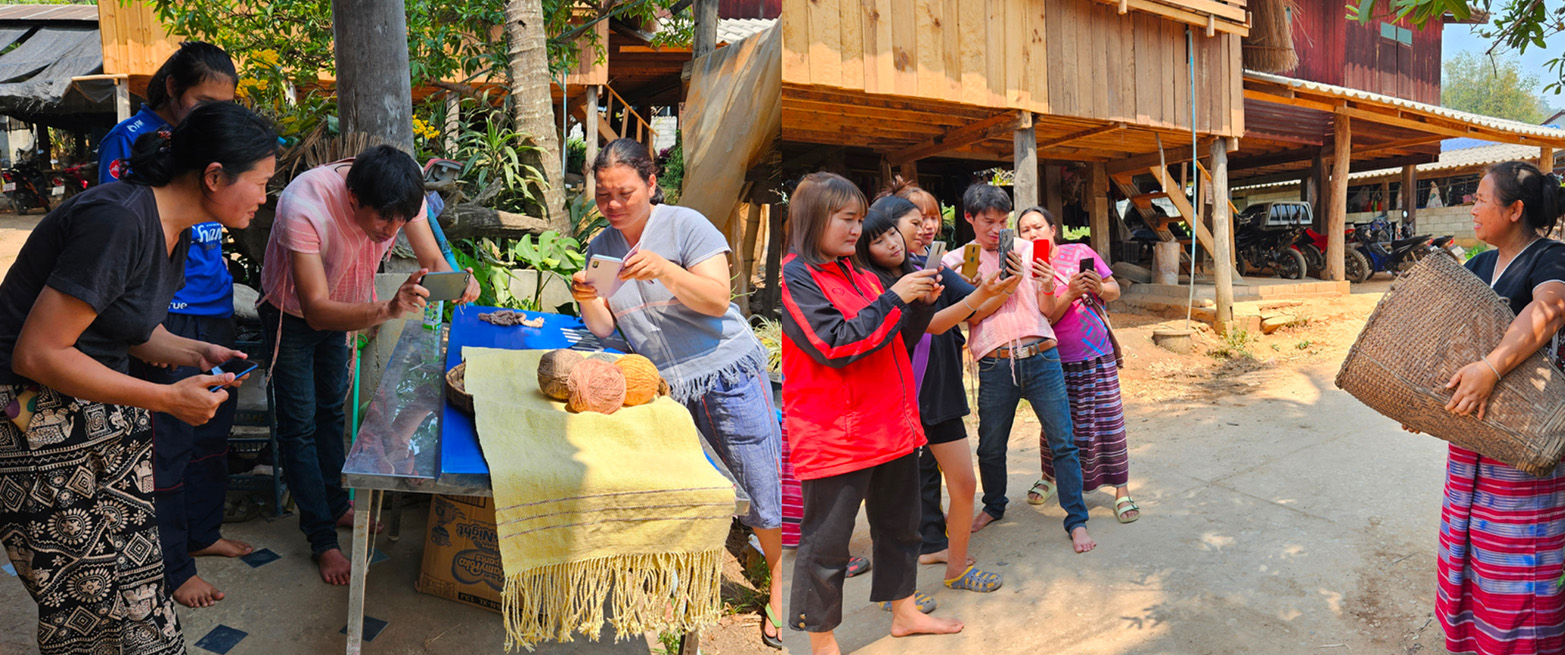
Women’s role in natural dyeing, forest conservation
Women play an important role as the main keepers of knowledge on natural dyeing. The female elders in particular know which tree or leaves can be used to produce a certain color.
On the other hand, the forest is indispensable as a source of materials for this craft. It is where the community members collect leaves and other materials from the trees for dyeing. This is why the community is active in forest conservation, as it is closely related to their socioeconomic wellbeing.
One thing unique about Huai Ekhang is that it’s the women who are managing their forest, which used to be a farming area. Logging is now prohibited, but collection of non-timber products is allowed. The women have in-depth knowledge about the forest including the names of trees, edible fruits, tubers, the roots and leaves that can serve as medicines, and materials for dyeing.
During the training on April 8-10, 2023, Samdhana staff also came to learn about the community’s weaving and forest conservation practices.
The weaving activity of the Karen people in Huai Ekhang is a local social enterprise based on community resources and intertwined with forest conservation, which has been successfully done by the community as a whole.
